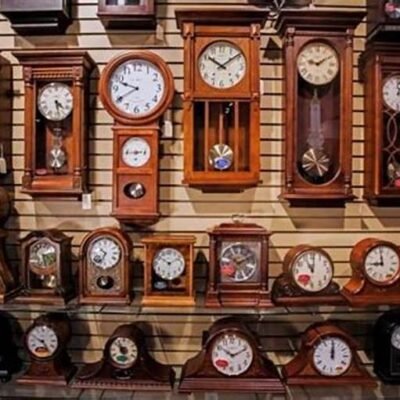🏭 How Bottles Are Made
How Bottles Are Made: A Comprehensive Guide
Bottles are one of the most ubiquitous items in our daily lives. They hold beverages, cleaning supplies, cosmetics, medicines, and many other products. Yet few people think about the intricate processes, technologies, and raw materials that go into making these essential containers. This article delves into the detailed manufacturing processes of bottles made from plastic, glass, and metal, highlighting the science and engineering behind the scenes. With over 3000 words of content, we will explore every stage—from raw material selection to the final quality inspection and recycling—presenting a full picture of this fascinating industry.

1. Introduction to Bottle Manufacturing
Modern bottle manufacturing is an industrial feat that combines principles of chemistry, mechanical engineering, automation, and sustainability. Whether produced for single-use or for long-lasting applications, bottles must meet strict quality criteria and regulatory standards.
Table of Contents
Key Points:
- Bottles are primarily made from three different materials: plastic, glass, and metal.
- Each material requires unique raw materials, processes, and machines to achieve optimal properties.
- The selection of material is influenced by the intended use—food safety, durability, recyclability, and aesthetic appearance all play significant roles.
In the sections that follow, we will explore the specific processes and technologies used to manufacture each type of bottle. We begin with plastic bottles, which are among the most widely used due to their versatility, light weight, and cost-effectiveness.
2. Plastic Bottles
Plastic bottles dominate the beverage industry and are utilized in various consumer goods. The most commonly used plastic in bottle manufacturing is PET (Polyethylene Terephthalate), known for its strength, thermo-stability, and recyclability.
2.1. Raw Materials
The primary raw material for plastic bottles is PET resin, which originates from petrochemicals. In addition to PET, additives such as colorants, UV inhibitors, and anti-block agents might be included to achieve specific properties:
- PET Resin: A thermoplastic polymer prized for its clarity and chemical resistance.
- Additives: Substances that help stabilize the polymer during processing and enhance its physical appearance.
- Recycled Materials: Increasingly, manufacturers blend recycled PET with new resin to promote sustainability.
2.2. Manufacturing Process
The manufacturing of PET bottles involves several critical stages, which ensure that the final product is consistent, durable, and safe for consumer use.
Step 1: Resin Preparation and Drying
Before processing, PET resin pellets must be dried to remove moisture that can cause defects during molding. The drying process typically takes place in a continuous dryer where the pellets are exposed to controlled heat.
Step 2: Injection Molding
The dried PET pellets are fed into an injection molding machine:
- Melting: The pellets are heated in a barrel until they become a malleable liquid.
- Injection: The molten polymer is injected into a mold to form a “preform”—a small, thick-walled tube with a threaded neck.
This preform looks similar to a test tube and will eventually be expanded into the shape of a bottle.
Step 3: Preform Cooling
After the injection molding step, the preform is cooled quickly to set its shape. Rapid cooling helps minimize internal stresses and ensures dimensional stability in the final product.
2.3. Injection Molding and Blow Molding Techniques
After creating the preform, the next stage is blow molding, a process that gives the preform its final shape.
Blow Molding Process:
- Reheating the Preform: The preform is reheated uniformly to a temperature where the polymer becomes pliable again but below its full melting point.
- Placement in the Blow Mold: The heated preform is transferred into a bottle-shaped mold.
- Air Inflation: High-pressure air is injected into the preform, forcing it to expand against the walls of the mold.
- Cooling and Solidification: Once the plastic adapts to the mold’s shape, it is cooled to solidify the structure.
There are different blow molding techniques:
- Extrusion Blow Molding: Typically used for hollow parts; the process involves extruding a tube (parison) and then blowing it.
- Injection Blow Molding (IBM): Often used for small bottles such as those for toiletries. It starts with injection molding of a preform followed by blow molding.
These techniques allow for the high-speed production of bottles with consistent wall thickness and excellent clarity.
2.4. Quality Control and Recycling
Quality control in plastic bottle production is essential to ensure that bottles meet strict regulatory standards for food and beverage packaging.
Quality Checks Include:
- Visual Inspection: Automated systems detect any surface irregularities or defects.
- Pressure Testing: Ensuring that bottles can withstand internal pressure without deforming.
- Dimensional Accuracy: Verifying that the bottle dimensions adhere to specifications.
Recycling:
One of PET’s significant advantages is its recyclability. Used PET bottles can be collected, cleaned, and reprocessed into fibers for clothing, carpets, or even new bottles. Recycling not only conserves resources but also reduces environmental impact by lowering the amount of waste going to landfills.

3. Glass Bottles
Glass bottles have a long history and remain popular due to their recyclability, inertness, and aesthetic quality. Unlike plastic, glass bottles are made from natural raw materials and can be recycled indefinitely without loss of quality.
3.1. Composition and Raw Materials
The typical raw materials in glass bottle production include:
- Silica Sand: The primary component responsible for the structure of glass.
- Soda Ash (Sodium Carbonate): Lowers the melting point of silica.
- Limestone (Calcium Carbonate): Enhances the chemical durability of the glass.
- Frit: A pre-melted mixture that aids in the homogeneity of the raw materials.
These ingredients are carefully measured and mixed to achieve the correct composition for the desired type of glass.
3.2. Melting and Forming Processes
Glass bottle production begins with creating molten glass.
Step 1: Batch Preparation and Melting
- Batch Mixing: The raw materials are batched according to the glass formulation.
- Melting: The batch is fed into a furnace that operates at temperatures around 1700°C. In the furnace, all the ingredients fuse to form a molten glass mixture, ensuring homogeneity and the elimination of impurities.
Step 2: Forming the Bottles
Once molten, the glass is transferred to forming machines. There are two main methods for forming glass bottles:
Blow-and-Blow Process
- Initial Blow: The molten glass is gathered in a gob, which is then dropped into a blank mold. A puff of compressed air forms the initial shape known as a “blank.”
- Final Blow: The blank is reheated and placed into a final mold where a second blow of air shapes it precisely into a bottle.
Press-and-Blow Process
- Pressing: Instead of a blow into a pre-shaped mold, a plunger mechanically presses the molten glass into the mold to create the near-final shape.
- Blow Finishing: Compressed air is then used to expand the glass gently to achieve the final bottle dimensions and contours.
3.3. Annealing and Finishing
After forming, glass bottles must be cooled carefully to prevent internal stress.
Annealing Process:
- Annealing Lehr: Bottles travel through a controlled cooling oven called a “lehr.” The temperature in the lehr gradually decreases, allowing the glass to slowly cool, thereby reducing stress and increasing durability.
- Inspection of Annealing: After annealing, bottles are inspected for imperfections like cracks, bubbles, or residual stresses.
Final Finishing:
- Trimming: Excess glass from the forming process is trimmed off.
- Surface Treatment: The bottles may also be polished, decorated, or etched for aesthetic purposes depending on their intended use.
3.4. Inspection and Sustainability
Glass bottles undergo rigorous quality checks:
- Visual and Automated Inspections: Look for surface flaws, cracks, and inconsistencies.
- Pressure and Impact Testing: Ensure durability during use and transportation.
Sustainability of Glass:
- Recyclability: Glass is 100% recyclable and can be recycled repeatedly without degradation in quality. Recycled glass (cullet) is mixed with new batch materials, reducing energy consumption and raw material needs.
- Energy Considerations: Although glass furnaces require high energy, modern techniques and the use of cullet have significantly reduced the environmental footprint of glass bottle production.

4. Metal Bottles
Metal bottles, commonly constructed from aluminum and stainless steel, are favored for their durability and reusability. They are particularly popular for beverages and food storage due to their robust nature and excellent insulation properties.
4.1. Materials Used: Aluminum and Stainless Steel
Aluminum:
- Lightweight and Durable: Aluminum bottles offer a great strength-to-weight ratio.
- Recyclable: Aluminum is one of the most recycled materials in the world, saving significant amounts of energy in production.
Stainless Steel:
- Corrosion Resistance: Stainless steel bottles are ideal for various environments as they resist rust and corrosion.
- Thermal Insulation: Often used in insulated bottles, stainless steel can help maintain the temperature of contents longer.
4.2. Manufacturing Processes: Deep Drawing and Extrusion
Metal bottle production involves forming metal sheets or coils into the desired shape using stamping, deep drawing, or extrusion processes.
Deep Drawing Process:
- Blank Preparation: A circular metal blank is punched out from a metal sheet.
- Drawing: The blank is placed over a die cavity, and a punch forces the metal into the shape of the die. This process can be repeated in several stages to achieve the final bottle shape with even wall thickness and reinforced structure.
- Trimming: Excess material is removed, and the bottle’s neck and rim are formed to accept lids or caps.
Extrusion Process:
- Extruding the Metal: In some cases, especially for thermally insulated bottles, metal is forced through an extrusion die to form a continuous tube that is later cut and welded into shape.
- Welding and Assembly: The extruded parts are welded together and treated to ensure a seamless finish.
4.3. Surface Treatment and Assembly
Once the shape is formed, metal bottles undergo several finishing processes:
- Surface Cleaning: The bottles are cleaned to remove oils, dust, and any impurities.
- Polishing: Polishing enhances the appearance and ensures that the surface is smooth for safety and hygiene.
- Coating: Some metal bottles may be coated with protective layers or painted to prevent corrosion and add decorative elements.
- Assembly of Components: Bottles with multiple parts (such as removable lids or insulation layers) are assembled. Precision in this step is essential to ensure proper sealing and insulation performance.

5. Quality Assurance and Safety Standards
Whether made of plastic, glass, or metal, bottles must adhere to stringent quality and safety standards to meet regulatory requirements and consumer expectations. Each stage of production is monitored through:
Inspections:
- Visual Inspections: Automated cameras and human inspectors examine each bottle for defects.
- Non-Destructive Testing: Techniques such as X-ray or ultrasonic testing ensure that internal structures are free from flaws.
- Dimensional Verification: Machines measure dimensions to confirm that each bottle meets the precise specifications required for its intended use.
Safety and Compliance:
- Food Contact Standards: Bottles designed for food and beverages are produced in clean, sterile environments, and materials used must comply with FDA, EFSA, or equivalent standards.
- Mechanical Testing: Tests for impact resistance, burst pressure, and tensile strength help ensure that bottles will perform reliably throughout their lifecycle.
- Chemical Resistance: Especially for plastic and glass bottles, resistance to chemicals found in cleaning agents or various products is tested to ensure longevity and safety.
Quality assurance is not only important during initial production but is continued through the supply chain, especially when bottles are filled with products and distributed globally.
6. Environmental Impact and Recycling
As the world becomes more environmentally conscious, the bottle manufacturing industry has seen significant advancements in reducing its environmental footprint. This is achieved through:
Sustainable Production Techniques:
- Energy-Efficient Furnaces: Modern glass furnaces use advanced technologies that lower energy consumption.
- Recycling Initiatives: The use of recycled PET in plastic bottle production and cullet in glass manufacturing lessens the demand for raw materials.
- Eco-Friendly Coatings and Additives: Some metal bottles use environmentally friendly coatings that reduce the release of harmful substances.

Recycling Processes:
Plastic Bottles:
- Collection and Sorting: Post-consumer PET bottles are collected through recycling programs.
- Washing and Reprocessing: Bottles are cleaned, shredded, and melted. The molten plastic is then reformed into new products, such as fibers, carpets, or even new bottles.
- Circular Economy: Advances in technology now allow almost 100% of PET to be recycled into new products, reducing waste significantly.
Glass Bottles:
- Cullet Recycling: Broken or used glass is crushed into cullet, which is mixed with raw materials to create new glass.
- Indefinite Recycling: Glass does not lose quality during recycling. It can be re-melted and reformed repeatedly, making it one of the most sustainable packaging materials.
- Energy Savings: Using cullet in glass production reduces the required melting temperature, which saves energy and reduces emissions.
Metal Bottles:
- Aluminum Recycling: Aluminum recycling is highly efficient, requiring only a fraction of the energy needed to produce primary aluminum. This process is economically viable and environmentally beneficial.
- Stainless Steel Recycling: Stainless steel is also highly recyclable. End-of-life stainless steel bottles are collected, sorted, and reprocessed into new steel products.
Global Trends:
- Legislation and Regulation: Governments worldwide are enforcing stricter guidelines on packaging waste, incentivizing the development of sustainable materials and recycling practices.
- Consumer Awareness: As consumers become more eco-conscious, companies are increasingly adopting sustainable practices in bottle manufacturing to appeal to market demands.
7. Technological Advances and Future Trends
The bottle manufacturing sector is continuously evolving with technological innovations designed to improve efficiency, product quality, and sustainability.
Automation and Robotics:
- Increased Automation: Modern bottle production lines utilize robotics for tasks such as mold changing, quality inspection, and packaging. Automation not only boosts production speeds but also improves consistency by reducing human error.
- Smart Manufacturing: Integration of IoT (Internet of Things) devices in manufacturing equipment allows real-time monitoring of production parameters, ensuring that processes remain within optimal ranges.
Advanced Materials:
- Bioplastics and Composite Materials: Researchers are developing new types of bioplastics made from renewable resources, reducing reliance on fossil fuels. These bioplastics are increasingly being incorporated into bottle manufacturing.
- Nanotechnology: The application of nanomaterials in coatings and additives can enhance the strength, thermal properties, and barrier qualities of bottles, particularly in food packaging applications.

Sustainability Trends:
- Zero-Waste Production: Manufacturers are striving toward zero-waste production methods by developing processes that fully recycle waste materials back into the production cycle.
- Energy Innovations: The use of renewable energy sources in manufacturing facilities, along with energy recovery systems, is becoming a standard practice in many modern plants.
- Digital Twin Technology: Creating digital replicas of manufacturing processes allows engineers to simulate modifications and optimize production before implementing changes in physical systems, further reducing waste and enhancing efficiency.
Future Possibilities:
- 3D Printing: Although still in its early stages for mass production, 3D printing technology shows promise for creating custom bottle designs on-demand, potentially reducing inventory waste and catering to niche markets.
- Smart Packaging: Future bottles may incorporate sensors that monitor product freshness, usage rates, and even environmental conditions, providing real-time feedback and enhancing consumer engagement.
8. Conclusion
The world of bottle manufacturing is a testament to human ingenuity and engineering excellence. From the lightweight versatility of plastic and the aesthetic appeal of glass to the durability of metal, each type of bottle is created through a rigorous and highly specialized process.
Recap of Key Points:
- Plastic Bottles: Begin as PET resin pellets that undergo drying, injection molding, preform creation, and blow molding to become finished bottles. Quality control ensures they are safe and effective for consumer use, and recycling techniques have minimized environmental impact.
- Glass Bottles: Created from natural raw materials like silica sand, soda ash, and limestone, glass bottles are formed by melting these ingredients at extremely high temperatures and then blown or pressed into shape. The annealing process is critical for ensuring durability.
- Metal Bottles: Whether made of aluminum or stainless steel, metal bottles are formed by processes such as deep drawing and extrusion, followed by meticulous finishing, polishing, and assembly. Their robustness and recyclability make them ideal for reusable containers.
- Quality and Sustainability: Across all materials, rigorous quality assurance measures and an increasing emphasis on eco-friendly practices are shaping the future of bottle manufacturing. Technology, from robotics to smart sensors, is enhancing productivity and sustainability further.
In summary, the journey of a bottle—from raw material to a finely finished container—requires an impressive blend of science, engineering, and precision craftsmanship. As environmental concerns rise, the industry continues to innovate with sustainable practices and advanced technologies, ensuring that even everyday objects like bottles contribute to a more sustainable future.
This detailed exploration of bottle manufacturing provides an in-depth understanding of the processes, technologies, and innovations that turn basic raw materials into the countless bottles we encounter every day. By examining plastic, glass, and metal manufacturing, we gain an appreciation of the complex interplay between materials science, mechanical engineering, quality control, and environmental sustainability. Whether you are a student, an industry professional, or simply a curious mind, the intricate world of bottle production highlights the remarkable depth behind even the most commonplace items in our lives.
Note: This article aims to offer a comprehensive overview. Specific manufacturing details and equipment may vary across different plants and regions based on technological advancements and local regulatory requirements. The evolution of digital monitoring and automation in these industries is expected to further revolutionize the way bottles are made, making the processes even more efficient and environmentally friendly in the near future.
This concludes our extensive article on how bottles are made. We hope this in-depth discussion meets your needs and provides valuable insight into the complex yet fascinating world of bottle manufacturing. If you have any more questions or need further clarification on any part of the process, feel free to ask!

Must Watch These
https://pram123.com/🧲-how-to-make-a-magnet-at-home/
https://pram123.com/whiteboard-सफेद-रंग-के-क्यों-होते-है/
https://pram123.com/cap-के-ऊपर-ये-गोल-चीज़-क्यों-हो/
Want To Read More









